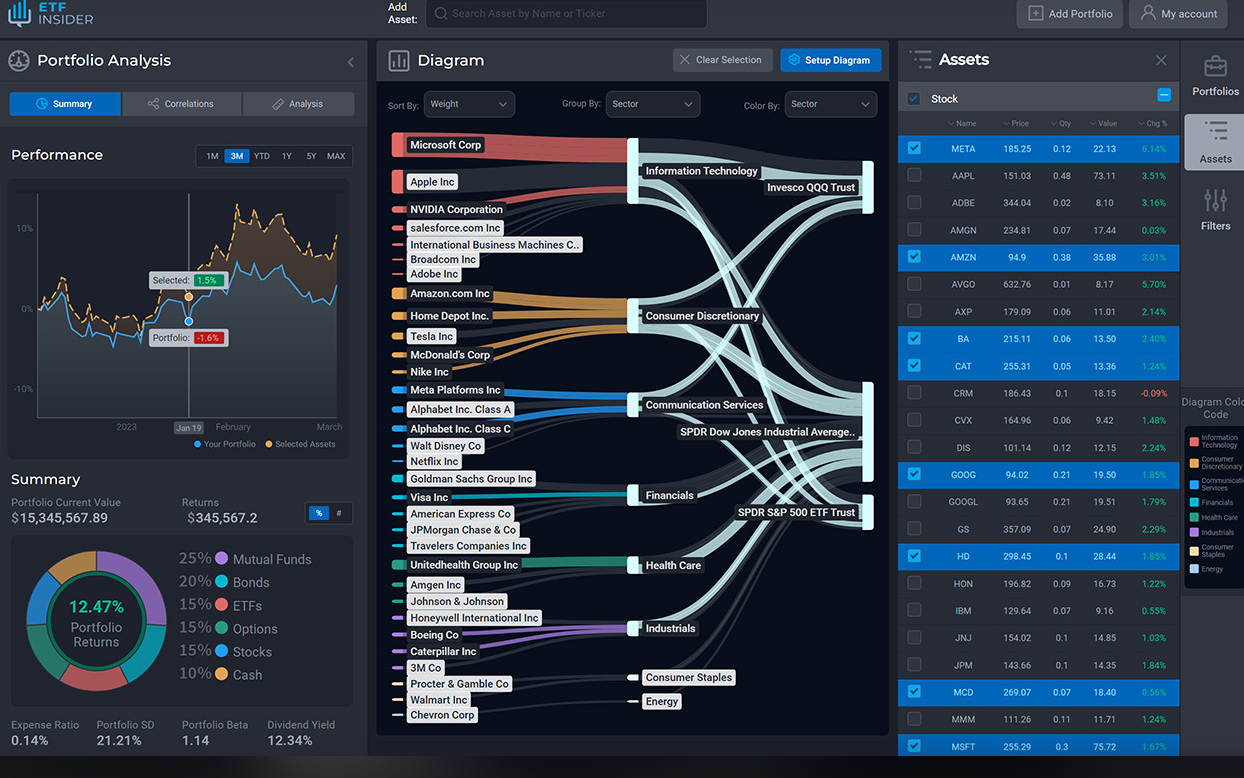
What is the HIBL ETF ?
In the world of finance, Exchange-Traded Funds (ETFs) have gained immense popularity due to their diversified nature and potential for significant returns. One such ETF that has been gaining attention is the HIBL ETF. In this article, we will delve into the details of the HIBL ETF, exploring its underlying components, benefits, and key considerations before investing.
<h2>HIBL ETF: Overview <h2> The HIBL ETF, officially known as the High Beta S&;P 500® ETF, aims to provide investors with exposure to a carefully selected group of securities from the S&;P 500® Index, characterized by the highest sensitivity to market movements or "beta." The ETF is designed to track the performance of these high-beta securities, offering investors an opportunity to potentially capitalize on market volatility and outperform the broader market. <h2>HIBL ETF Underlying and Exposure: What Does It Track and How? <h2> The underlying methodology of the HIBL ETF is based on the S&;P 500® Index, which is provided by S&;P Dow Jones Indices, a reputable and widely recognized index provider. The Index Provider selects 100 securities from the S&;P 500® Index with the highest beta over the past 12 months. By analyzing the daily price changes of each security, the Index Provider ranks and includes them in the HIBL ETF. It is important to note that securities with the highest beta are generally considered more volatile than others in the S&;P 500® Index.As of December 30, 2022, the HIBL ETF consisted of 98 components, with total market capitalizations ranging from $4.1 billion to $2.1 trillion. The ETF is primarily concentrated in the information technology and consumer discretionary sectors. It's essential to understand that the components and sector allocations of the HIBL ETF may change over time due to the Index's periodic review and rebalancing.
 HIBL overlap What is the HIBL ETF ?
HIBL overlap What is the HIBL ETF ?
Conclusion:
In conclusion, the HIBL ETF offers investors an opportunity to gain exposure to high-beta securities from the S&;P 500® Index. Its focus on market sensitivity can potentially yield higher returns during periods of volatility. However, it is essential for investors to carefully consider their risk tolerance and conduct thorough research before investing in this ETF or any financial instrument.
Disclaimer: This article is for informational purposes only and does not constitute investment advice. We are not providing any investment advisory services. Investors are advised to conduct their due diligence and consult with a financial advisor before making any investment decisions.
HIBL ETF issuer
HIBL ETF official page
HIBL quote and analysis
Discover the top holdings, correlations, and overlaps of ETFs using our visualization tool.
Our app allows you to build and track your portfolio.
To learn more about the HIBL Direxion Daily S&P 500 High Beta Bull 3X Shares, access our dedicated page now.
FAQ
What is the HIBL ETF?
The HIBL ETF, also known as the iShares S&P Global 1200 Information Technology ETF, is an exchange-traded fund that aims to track the performance of global equities in the information technology sector.
What is the underlying index that the HIBL ETF aims to track?
The HIBL ETF aims to track the S&P Global 1200 Information Technology 4.5/22.5/45 Capped IndexTM. This index is designed to measure the performance of large-capitalization stocks in the information technology sector from major global markets.
What types of companies are included in the HIBL ETF?
The HIBL ETF includes companies in the information technology and technology industries or sectors from various countries, including Canada, China, Finland, France, Germany, Italy, Japan, the Netherlands, New Zealand, South Korea, Sweden, Switzerland, Taiwan, the U.K., and the U.S.
How does the HIBL ETF work?
The HIBL ETF uses a representative sampling indexing strategy, which means it invests in a sample of securities that collectively has a similar investment profile to the underlying index. The fund generally invests at least 80% of its assets in the component securities of the Underlying Index and uses various financial instruments to help track its performance.
What are the advantages of investing in the HIBL ETF?
Investing in the HIBL ETF provides exposure to a diversified basket of information technology stocks from major global markets. It allows for cost-efficient access to the sector, potential tax benefits due to low turnover, and eliminates the risk of underperforming the underlying index due to active management.